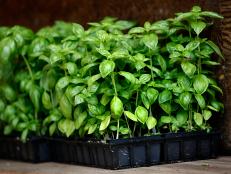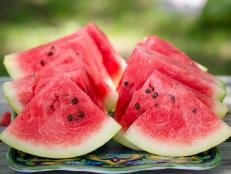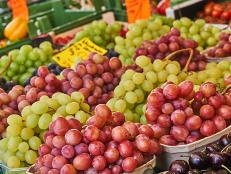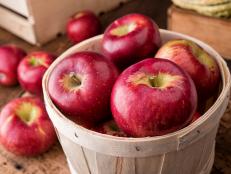Everything You Need to Know About Langoustines

Thinkstock, Thinkstock
There are some ingredients that just scream luxury. Think of these ingredients as examples: caviar, lobster, truffles and Champagne. While we may know small bits of information on these products, if pressed for more info, we might struggle to give a detailed description of what they are, where they come from and what makes them so special (and so expensive).
This feature will put a spotlight on some of my favorite luxury ingredients. But I hope that when you read these articles, you will be inspired to seek out the best of the best and discover why your favorite Food Network chefs love them so much.
Let’s begin with that sweetest of seafood delicacies: langoustines.
What Are Langoustines?
Langoustines are similar in appearance to crayfish, but differ in that they grow in saltwater seas and oceans, whereas crayfish breed in freshwater rivers and lakes. The Latin name of langoustines is Nephrops norvegicus, and they’re actually a relative of the lobster, with which we’re all familiar. Langoustines are smaller than lobster, however, growing in size to a maximum of only around 10 inches.
Their shells are a light shade of orange and, unlike lobsters’ shells, they don’t change color when they are cooked. The smaller langoustines caught are particularly prized for the sweet meat found in their tails, which you might see being advertised as “scampi” on restaurant menus. The larger specimens might not be quite as tasty, but they do offer up more meat from the body and claws.
You might also see langoustines being sold as Dublin Bay prawns or Norway lobster.
Where Do Langoustines Come From?
Although, as their Latin name suggests, langoustines were first found off the coast of Norway, the majority of the ones caught today come from the cold waters of the northern Atlantic and the North Sea, particularly off the west coast of Scotland in the Moray Firth and toward Iceland.
The langoustine has become hugely important to the Scottish fishing industry, which was decimated by a ban on herring fishing in the 1970s, and Scotland now provides more than half of the amount of langoustines eaten around the world.
The biggest markets for langoustines are France and Spain where they are known as cigalas.
What Makes Langoustines So Special?
As with so many luxury ingredients, the fact that langoustines are quite rare is what makes them so expensive. There are two reasons why they are so hard to come by.
1: The first is that it is such hard work to catch them. This is done in a similar way to harvesting lobsters, using pots or creels that are laid on the seabed, where the langoustines scavenge for worms and small fish. As I have experienced, hauling up lobster pots can be a grueling task, particularly when it takes place in the unforgiving and cold waters of the North Sea.
2: The second reason langoustines are so rare is that their numbers suffered a rapid decline at the turn of the millennium. There are now very strict guidelines and quotas for catching the animals, issued both by the British government and by the European Union, which limit the numbers available every year and have led to an increase in price.
Despite their cost, there is another reason why langoustines are so special, and that is because they are incredibly delicious. They would probably rank in my top 10 food experiences in the world, particularly if, as I have been lucky enough to experience, they are boiled in the salty waters from which they have been caught, or if they are grilled to perfection, as in the astonishing Scampi Vivi served at the Bartalotta Ristorante Di Mare at the Wynn Hotel, Las Vegas.
How Do I Prepare Langoustines?
Once caught, langoustines are very difficult to keep alive, so most of them will be quick-frozen while the boats are still at sea. Some will be sold whole, and others will be broken down and shelled to separate the tail meat. Most good seafood markets will offer both frozen langoustines and those that have been thawed and are ready to cook. Make note, though, that if they have been defrosted, you should absolutely not refreeze them as there is a risk of bacteria.
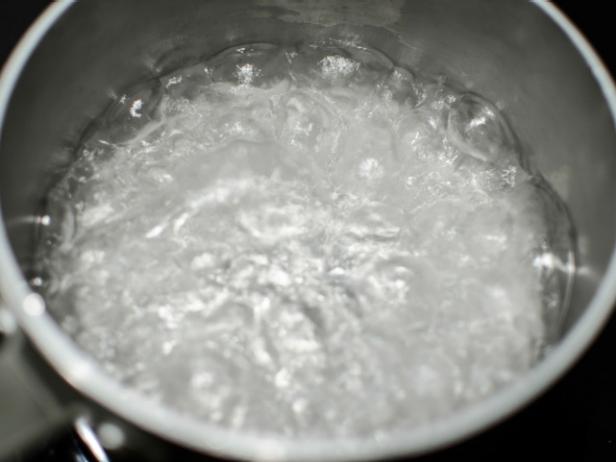
microstockonline
If you have bought the whole small langoustines, the best way to prepare them is to boil them in salted water and simply serve them family-style for everyone to dig into, with just a large side dish of garlic mayonnaise to dip the meat into and a big bowl for the discarded shells.
If you have larger langoustines, treat them like lobster. Split them down the center with a sharp knife, brush the meat with melted butter flavored with chopped tarragon, and bake or grill them.
If you have frozen langoustine tail meat, defrost it thoroughly and saute the tails in a hot pan with olive oil, garlic, minced red chili and lots of freshly chopped parsley. Serve this over your favorite pasta or simply with big chunks of fresh bread and a green salad.
If you fancy a tipple with it, a bottle of Chablis would be perfect; or, if you are really are pushing the luxury boat out, pop the cork of your favorite bottle of sparkling wine.
Perfection.
Related Links:



























